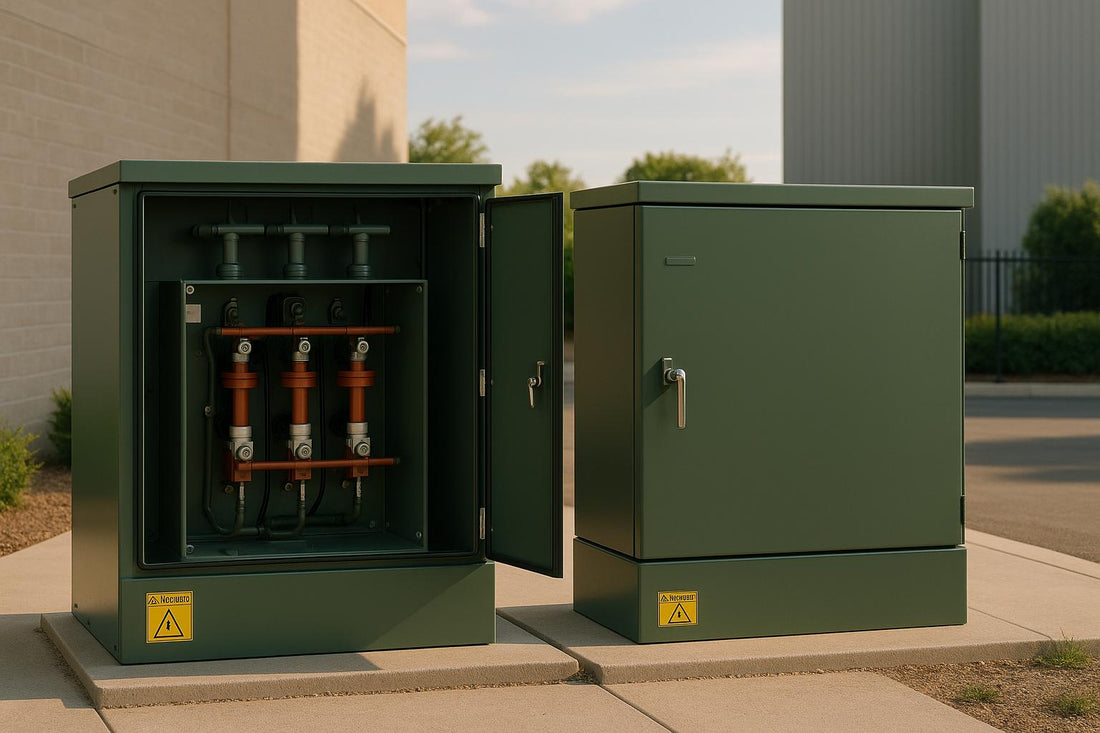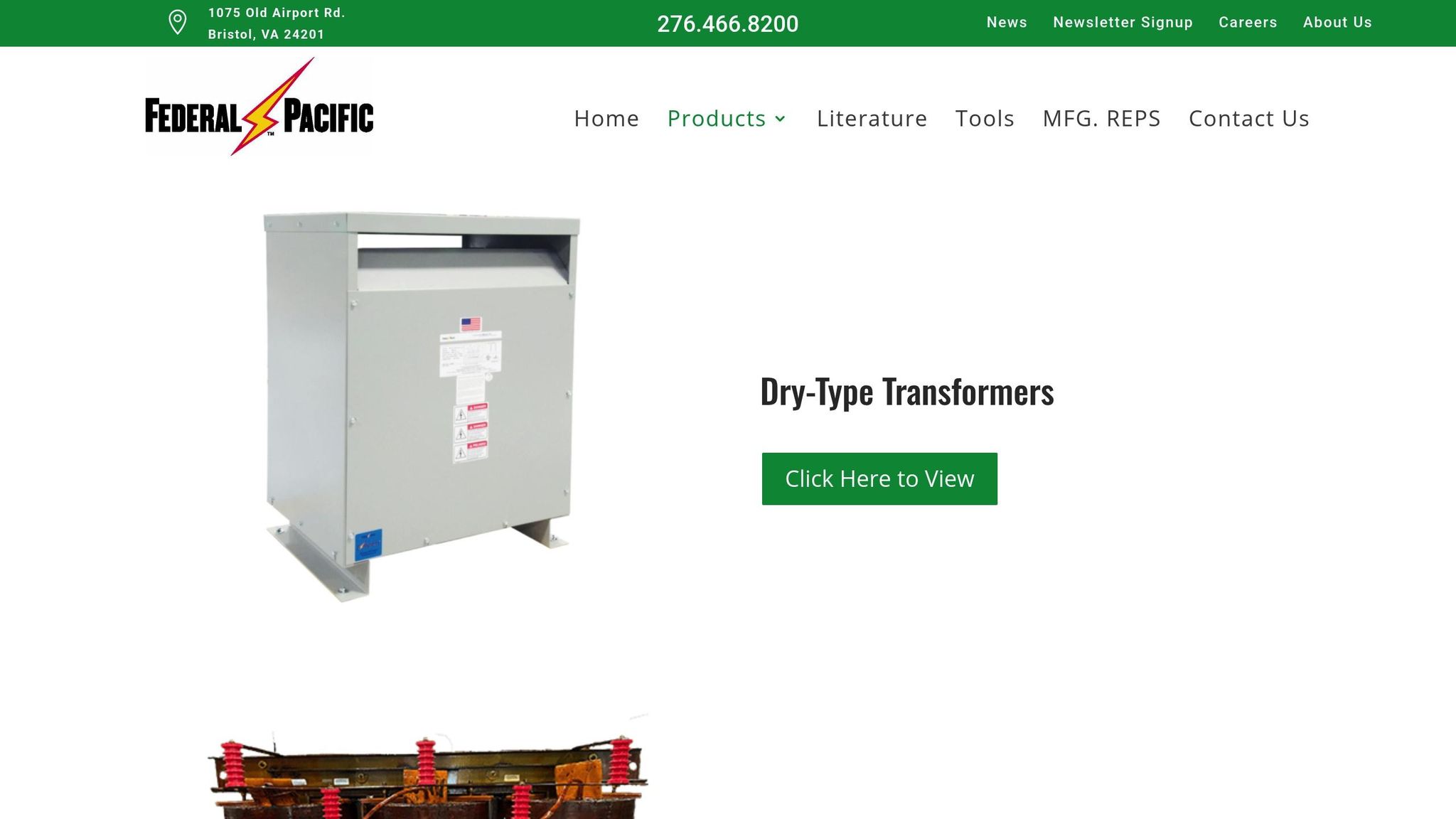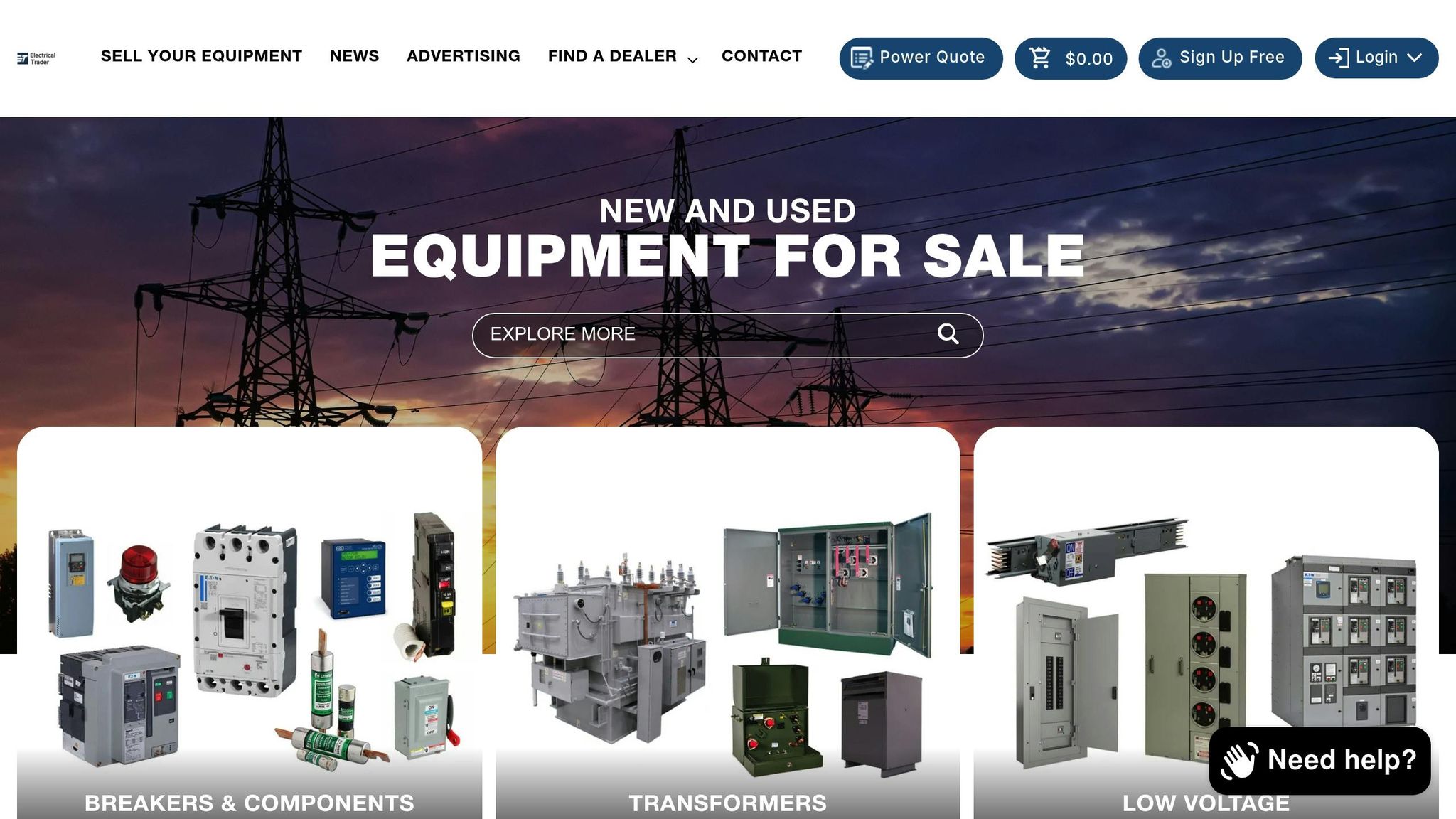
Live Front vs Dead Front Pad Mounted Switchgear
Share
When choosing between live front and dead front pad-mounted switchgear, the decision revolves around safety, maintenance, and application needs. Here's the key takeaway:
- Live Front: Features exposed energized components, offering easier visual inspections and lower upfront costs. Best for controlled environments with trained personnel, such as industrial sites or remote locations. However, it poses higher safety risks and is more susceptible to environmental damage.
- Dead Front: Fully encloses energized components, prioritizing safety and reducing arc flash risks. Ideal for public spaces like parks, schools, and residential areas. While the initial cost is higher, it provides better protection and lower long-term maintenance needs.
Quick Overview:
- Live Front: Lower cost, easier visual checks, higher safety risks.
- Dead Front: Safer, weather-resistant, higher initial cost.
Quick Comparison:
| Feature | Live Front | Dead Front |
|---|---|---|
| Safety Level | Exposed live parts | Fully enclosed components |
| Cost | Lower upfront cost | Higher initial cost |
| Maintenance | Requires de-energization | Can be serviced with insulated tools |
| Applications | Remote/industrial areas | Public spaces, urban areas |
| Weather Resistance | More vulnerable | Better protection |
Your choice should balance safety, cost, and operational needs. Dead front systems are safer and more reliable for public or high-risk areas, while live front systems suit controlled environments with budget constraints.
Type PSE Dead-front Pad-Mounted Switchgear - by Federal Pacific

Live Front Pad-Mounted Switchgear Explained
Live front pad-mounted switchgear features exposed, energized components, making it distinct from dead front designs. This openness allows for visual inspections but demands stringent safety measures and careful operation. Below, we’ll explore its design, typical applications, and the advantages and challenges it presents.
Design and Key Features
Live front switchgear is designed with visible, energized parts, allowing operators to easily check the system's status. Air serves as the primary insulation medium, offering a cost-effective alternative to oil, gas, or solid dielectric insulations.
"S&C's 'live-front' PMH Pad-Mounted Gear features directly accessible components which are visible during operation of the gear. Operating status is easily confirmed through visible gaps and grounds."
- S&C Electric Company
Federal Pacific's Type PSI/II Live-Front Pad-Mounted Switchgear incorporates removable barriers made from NEMA Class GPO-3 fiberglass-reinforced polyester and cycloaliphatic epoxy insulators that are 100% X-rayed for quality. These components meet key industry standards, including IEEE C37.74 for fault-closing capabilities and ANSI C57.12.28 for cabinet security and enclosure durability.
Common Applications
The unique design of live front switchgear makes it ideal for specific environments managed by trained professionals. It’s commonly used in utility substations, industrial facilities, and temporary power setups.
This equipment is offered in various pre-engineered configurations, such as radial feed, loop feed, and manual primary-selector switching, making it suitable for different distribution system layouts. Utility poles and industrial sites often benefit from the visibility of live front components, especially when operated by skilled electrical workers.
"Federal Pacific offers PLD Pad-Mounted Switchgear to provide an additional switchgear equipment choice for implementing underground distribution systems. The PLD units offer the application flexibility and operating convenience of both live-front and dead-front pad-mounted switchgear."
- Federal Pacific
Pros and Cons
Live front switchgear stands out for its lower initial costs and the ease of visual inspections. These features are particularly appealing in large-scale utility projects with multiple switching points. However, the exposed components also introduce significant risks.
Personnel working with live front units face heightened exposure to electrical hazards, requiring rigorous safety training and protective measures. Additionally, the exposed design makes the equipment more vulnerable to environmental contaminants, which can lead to faults or failures.
Dead Front Pad Mounted Switchgear Explained
Dead front pad-mounted switchgear is designed to fully enclose energized components, offering enhanced protection for both operators and the public while ensuring reliable medium-voltage switching. This design eliminates the exposure risks associated with live front systems, making it a safer option for medium-voltage applications. Below, we’ll explore the design, uses, and advantages that make dead front switchgear a practical choice for safety-focused operations.
Design and Key Features
Dead front switchgear houses medium-voltage components within an air-insulated, grounded steel enclosure. This setup eliminates exposed energized parts, significantly reducing safety risks compared to live front designs. Its key components include bushing wells and elbow connectors, which ensure insulated, enclosed connections. These features minimize operator exposure during both operation and maintenance. To ensure proper cable termination, connectors should be flush against the copper contact surface, preventing strain on bushings.
"PME Pad-Mounted Gear's dead-front design keeps crew members shielded from potentially harmful voltage."
- S&C Electric Company
Viewing windows allow operators to monitor switch-blade positions without opening the compartments, maintaining the safety barrier. Additionally, features like TransFuser Mounting simplify re-fusing procedures, offering a safer alternative to traditional methods. Modern designs also include advanced security measures, such as three-point latching door systems, security bolts, and heavy-gauge steel construction, meeting ANSI C57.12.28 standards for cabinet security. For instance, Federal Pacific’s PSE pad-mounted gear features a low-profile enclosure with a cross-kinked roof to prevent water accumulation. Eaton’s solid-dielectric switchgear incorporates vacuum fault interrupters for improved reliability, while the ISG-SD switchgear boasts a fully sealed, stainless steel construction for near maintenance-free operation and a clearly visible isolation point.
Common Applications
Dead front switchgear is particularly suited for outdoor installations and areas with public access, thanks to its enclosed design that minimizes accidental exposure. This makes it ideal for public spaces, where safety is paramount. For example, S&C Manual PME Pad-Mounted Gear is available in ratings of 14.4 kV and 25 kV, with switches capable of handling 600-ampere three-pole switching of source circuits.
"PME Pad-Mounted Gear is dead-front, air-insulated underground distribution switchgear that provides safety and reliability upgrades at a reasonable price."
- S&C Electric Company
This type of switchgear is particularly valuable for upgrading older live-front systems to meet modern safety standards and public safety regulations.
Pros and Cons
One of the standout advantages of dead front switchgear is its ability to reduce arc flash risks and shield components from environmental hazards, ensuring safer operation.
"The enclosure provides increased security of fuse and switch components from environmental concerns and enhanced isolation of medium-voltage circuits to limit exposure of operating personnel."
- Federal Pacific
Safe operation is further ensured by following proper procedures, such as replacing shipping caps on bushings with insulated separable connectors, protective covers, or plugs. Additionally, air insulation used in these systems is a cost-effective alternative to other dielectric options like oil, gas, or solid dielectric materials.
Live Front vs Dead Front: Direct Comparison
Live front switchgear reveals energized components when opened, while dead front models keep these parts fully enclosed within grounded metal compartments. This distinction impacts safety, maintenance practices, and overall costs. With live front systems, cables must be manually connected to high-voltage bushings, whereas dead front systems use plug-in terminations, offering safer handling.
Comparison Chart
Here’s a side-by-side look at the key differences between live front and dead front pad-mounted switchgear:
| Feature | Live Front | Dead Front |
|---|---|---|
| Safety Level | Exposed live parts when opened | Fully isolated components |
| Live Part Exposure | Visible bushings and lugs when cabinet door opens | All live parts enclosed within grounded metal compartments |
| Maintenance Requirements | Direct access after de-energizing | Requires insulated tools |
| Initial Cost | Lower initial cost | Higher initial cost due to complex insulation systems |
| Weather Resistance | More vulnerable to environmental conditions | Sealed compartments provide better protection |
| Safety Standard Compliance | Legacy systems only | Meets modern standards like IEEE |
| Typical Applications | Remote locations with qualified personnel access | Parks, schools, neighborhoods, industrial facilities |
| Connection Method | Manual cable connection to high-voltage bushings | Elbow connectors and plug-in terminations |
| Service Requirements | Must be de-energized before servicing | Can be serviced with proper insulated tools |
"G&W Electric padmount and vault mounted equipment are dead-front, which means there is no exposure to live energized parts, providing a safer working environment for personnel." - G&W Electric
While live front systems are more affordable upfront and allow easier access to components, dead front systems prioritize safety and weather resistance. The sealed compartments in dead front designs reduce the risk of environmental damage, making them more reliable in the long run. This reliability is especially important in areas where uninterrupted power delivery is non-negotiable.
Dead front switchgear’s ability to withstand harsh conditions and minimize outages makes it a preferred choice for locations like schools, parks, and industrial facilities. Choosing between live front and dead front systems comes down to weighing initial costs, maintenance needs, and the importance of safety and reliability in your specific application.
sbb-itb-501186b
Safety and Maintenance Requirements
This section delves into the specific safety and maintenance considerations for live front and dead front switchgear, highlighting how their design differences impact their operation and upkeep.
Safety Differences
Dead front switchgear provides a fully enclosed design, shielding energized components and minimizing the risk of accidental contact. In contrast, live front designs expose these components, increasing safety risks. For this reason, live front systems require strict de-energization procedures before any maintenance work, which can lead to more extensive safety measures and downtime.
According to OSHA standards, electrical equipment must meet specific safety requirements. For systems operating at 600 volts or less, OSHA 1910.303(g) mandates sufficient workspace and guarding of exposed parts. Systems operating above 600 volts fall under OSHA 1910.303(h), requiring stricter enclosure and workspace standards to ensure personnel safety.
Another key difference lies in arc flash risks. Dead front switchgear significantly reduces the likelihood of arc flash incidents compared to live front designs. This reduced risk can lessen the level of personal protective equipment (PPE) needed during maintenance, directly impacting safety protocols.
Maintenance Needs
The maintenance demands for live front and dead front switchgear also vary due to their designs. Live front switchgear requires a complete system shutdown before servicing, which often leads to planned outages and extended downtime. While its open design allows for visual inspections, the need for shutdowns can disrupt operations.
On the other hand, dead front switchgear allows maintenance personnel to perform certain tasks while the system remains energized, provided they use insulated tools and adhere to safety standards. However, its enclosed structure necessitates specialized tools for tasks like cable termination, adding complexity and requiring additional technician training.
Dead front switchgear also offers better protection against environmental factors, reducing weather-related maintenance issues. It complies with standards like UL 891, which ensures that low-voltage dead front switchboards can handle short-circuit currents ranging from 10,000 to 200,000 amperes. This durability contributes to its long-term reliability.
Training requirements further highlight the differences between the two systems. Live front switchgear demands extensive safety training, including lockout/tagout procedures, hazard recognition, and emergency response protocols. In contrast, dead front systems require training focused on using insulated tools but pose fewer immediate hazards during routine maintenance.
While live front switchgear may have a lower upfront cost, dead front designs can provide long-term advantages, such as reduced downtime, improved safety, and fewer weather-related maintenance challenges.
Selection Guide and Product Sourcing
How to Choose the Right Type
Choosing the right switchgear requires balancing design features with your operational needs, safety priorities, and budget. When selecting pad-mounted switchgear, consider site conditions, safety requirements, and long-term costs.
Safety should always come first. Dead front switchgear is designed with insulated components, reducing the risk of arc flash and electric shock. This makes it a safer choice for areas accessible to the public or environments where employee safety is a top concern.
Think about location and accessibility. Dead front switchgear works well in public spaces like parks, schools, and residential neighborhoods. On the other hand, live front switchgear is better suited for remote locations, industrial areas with strict access controls, or temporary setups where only trained personnel handle the equipment.
Budget is another key factor. Live front switchgear generally has a lower upfront cost compared to dead front options. However, it’s important to look beyond the initial price and consider the total cost of ownership, which includes maintenance expenses and potential downtime.
Space constraints can influence your decision too. Live front switchgear typically has a smaller footprint, making it a practical choice for urban areas or retrofit projects where space is tight.
Maintenance needs vary between types. Live front switchgear allows easier access for inspections and repairs, thanks to its exposed components. In contrast, dead front switchgear often requires de-energization to access certain parts.
Lastly, regulatory compliance is non-negotiable. In the U.S., switchgear must meet IEEE standards, with pad-mounted switchgear specifically covered under IEEE C37.74. Equipment should also carry the UL Mark, which is widely recognized for industrial, commercial, and residential applications. For installations in public spaces, compliance with NEMA safety labeling standards is essential. Always choose equipment that not only meets regulatory requirements but also enhances your system’s safety and performance.
Finding Products on Electrical Trader

Once you know the type of switchgear you need, sourcing it becomes easier with Electrical Trader. This online platform offers a wide selection of live front and dead front pad-mounted switchgear, featuring both new and used options from various manufacturers.
The site allows you to browse and filter listings by voltage, configuration, and safety features, helping you find the right match quickly. With equipment from well-known brands, Electrical Trader ensures access to reliable, industry-standard products.
Featured collections on the platform include options like 3-phase transformers and substation transformers, making it easier to find complete system solutions instead of just standalone components.
One of the platform’s strengths is the ability to compare specifications, pricing, and availability across multiple sellers. This feature is especially helpful if you’re balancing technical needs with budget constraints.
To further assist buyers, Electrical Trader offers a resource center packed with guides and technical information. These resources explain product features, compatibility, and installation tips, ensuring you make an informed decision before committing to a purchase.
Whether you’re buying a single pad-mounted switchgear unit or planning a large-scale electrical project, Electrical Trader caters to both small and bulk orders. The marketplace connects you with sellers offering a range of equipment conditions - from brand-new to refurbished - so you can find exactly what fits your requirements.
Conclusion
To wrap up the detailed comparisons, here’s a quick guide to help decision-makers select the right pad-mounted switchgear.
When prioritizing safety, location, and budget, dead front systems stand out by fully enclosing energized components. This design significantly reduces the risks of arc flash and electric shock.
"Dead front transformers are typically much safer than live front transformers because they have a lower risk of arc flash".
Because of this safety advantage, dead front units are increasingly used in public spaces like parks, schools, and residential neighborhoods. Their compact design also makes them suitable for urban areas where space is limited.
On the other hand, live front switchgear is better suited for controlled or remote environments, where only qualified personnel have access. Its lower upfront cost makes it a practical choice for temporary setups or projects with tight budgets. As one electrical expert explains, live front designs provide easy access to energized parts, while dead front systems aim to prevent unauthorized access from resulting in fatal incidents.
Ultimately, safety should never be sacrificed for cost savings. Dead front switchgear not only helps protect workers by minimizing exposure to live components but also ensures dependable power distribution. Whether you’re upgrading an industrial site or planning a residential project, selecting the right switchgear is critical for both immediate safety and long-term reliability.
FAQs
What safety factors should you consider when selecting between live front and dead front pad-mounted switchgear?
When deciding between live front and dead front pad-mounted switchgear, safety should be a top priority. Dead front switchgear offers full insulation for high-voltage components, significantly reducing the chances of electric shock or arc flash. This design makes it a safer choice for both operation and routine maintenance, particularly in settings where personnel regularly interact with the equipment.
On the other hand, live front switchgear features exposed high-voltage parts, which naturally heightens the risk of electrical shock and arc flash incidents. Handling this type demands strict compliance with safety protocols and the consistent use of personal protective equipment (PPE). Assess the safety requirements of your power distribution system carefully to determine which option best meets your needs.
What are the key differences in maintenance between live front and dead front pad-mounted switchgear?
When working with live front switchgear, technicians face higher risks due to exposed energized components. To ensure safety, it's crucial to de-energize and ground all parts, strictly adhere to lockout/tagout procedures, and wear the appropriate safety gear to reduce potential hazards.
On the other hand, dead front switchgear is designed with fully insulated and enclosed components, which greatly lowers the chances of arc flashes or electrical shocks. This setup not only makes maintenance safer but also more straightforward, as it limits direct contact with live parts while still meeting safety regulations.
Because of these advantages, dead front systems are often the go-to option for applications that require frequent maintenance, offering both ease and improved safety.
When is it better to choose live front switchgear over dead front switchgear, despite the increased safety risks?
Live front switchgear is often the go-to solution in environments where quick access for tasks like maintenance, testing, or sectionalizing takes precedence. This is especially relevant in controlled settings, such as substations or industrial facilities, where strict safety protocols are reliably upheld.
It’s also a practical choice in situations where arc flash risks are minimal - like areas with restricted public access - or where operational ease and system visibility outweigh the need for the enhanced safety features provided by dead front switchgear.
Related posts
- Ultimate Guide to Low Voltage Equipment
- Metal Clad vs Metal Enclosed Switchgear
- Pad Mount vs Substation Transformers
- UL891 vs UL1558 switchgear
